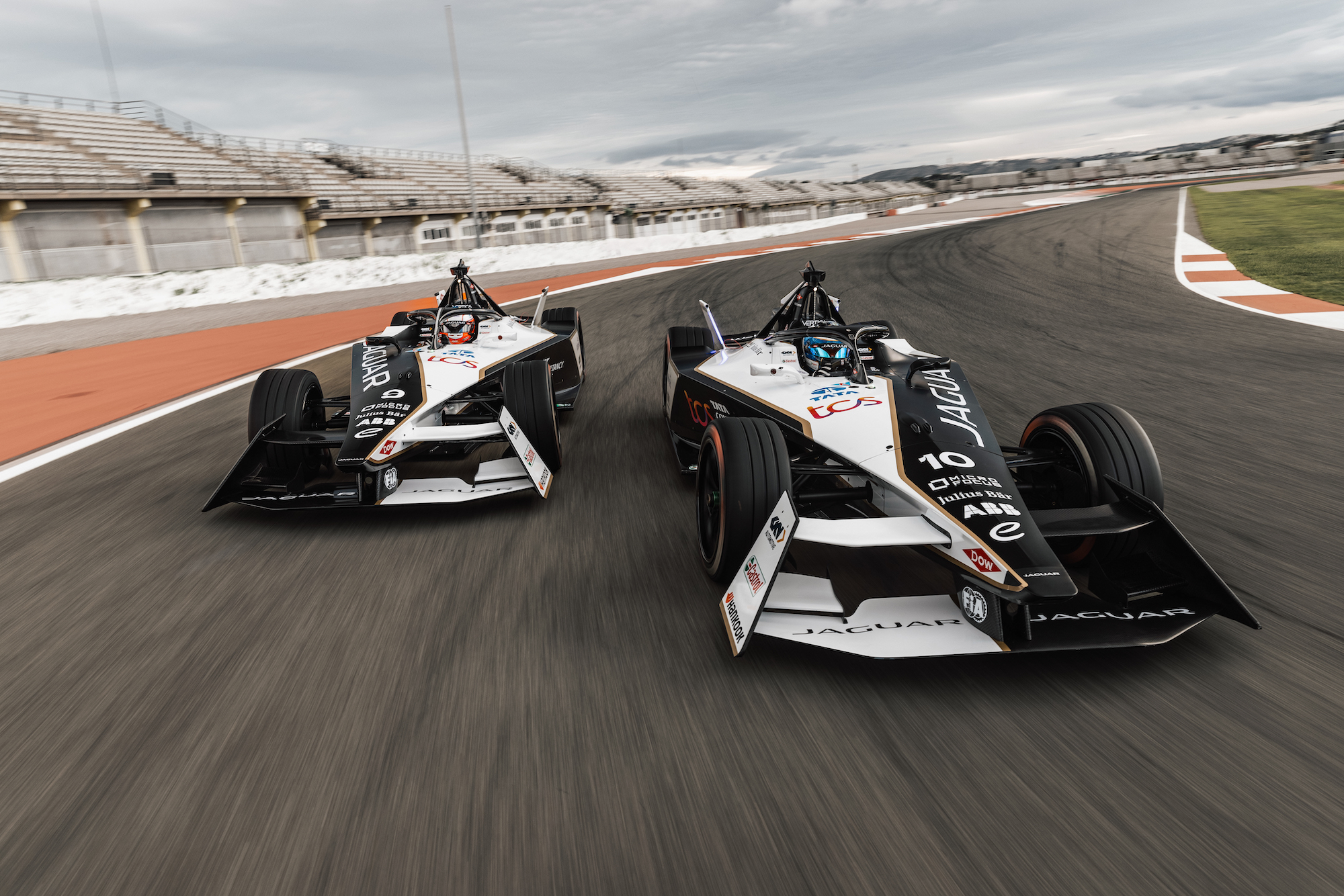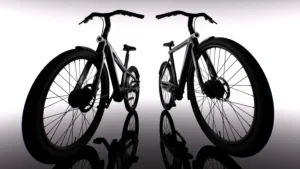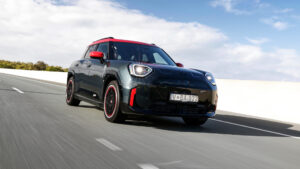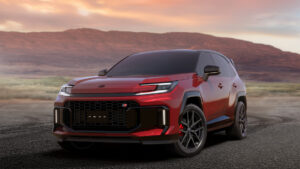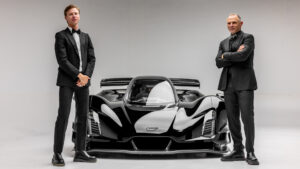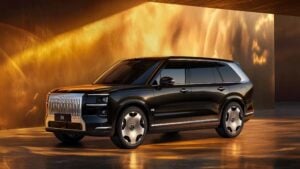The ABB FIA Formula E World Championship, as it is officially known, is deep into its electrifying ninth season. Live from the Jaguar TCS Racing garage in Hyderabad, India, Boss Hunting dials into the man at the helm of Jaguar TCS Racing, James Barclay.
Appointed to the role of Team Principal of the Jaguar TCS Racing Formula E Team in November 2015, Barclay has led the charge for the British marque’s triumphant return to motorsport. Now also bearing the title of Managing Director, Jaguar Land Rover Motorsport, the man who likely knows more about the sport than anyone in the world, helps us unpack everything you need to know about the Formula E World Championship.
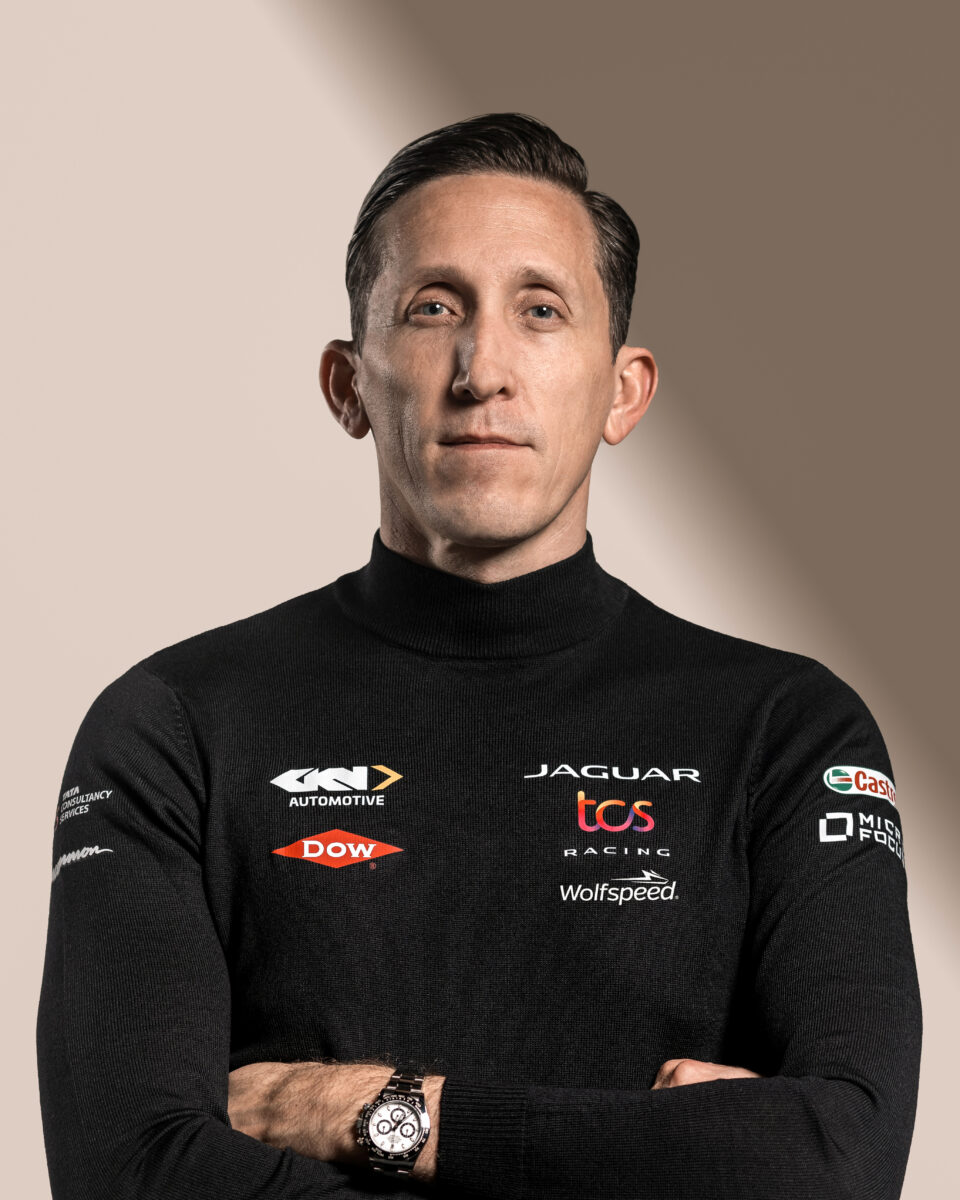
Formula E: The key facts
Formula E is the first sport to be carbon-neutral since its conception. It debuted in 2014 and gained official FIA World Championship status in 2020. For its ninth outing, it boasts a schedule of 16 race meets all over the globe – from Cape Town to Rome – for a season that lasts for roughly six months.
There are 11 teams in the pitlane and 22 drivers on the starting grid. Jaguar TCS Racing has been competing since season three alongside a host of big-name manufacturers like Porsche, McLaren, Maserati and Nissan.
Every “E-Prix” is held at a street circuit and races now run for a set number of laps, as opposed to previous years in which races were limited to a set run time. Unlike in Formula 1, the free practice sessions are followed by a unique head-to-head qualifying format where cars face off against one another in a duel. The winner of each qualifying race progresses up the grid until the running order is settled.
As an official FIA-governed motorsport, the standard points system applies to Formula E. Pole position earns the driver an additional point, as does the fastest race lap.
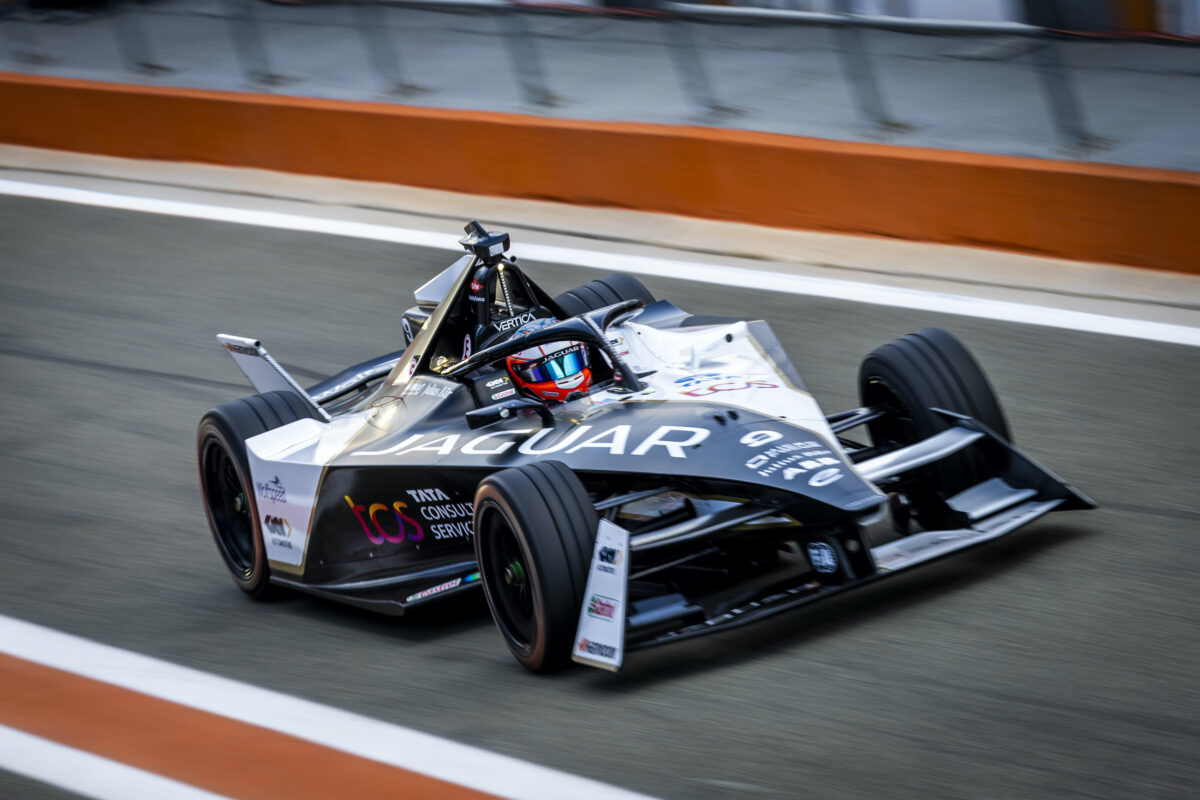
Why do you need to know about Formula E?
A lot has changed in less than a decade of electric racing. Every season the cars get faster, more efficient, and more entertaining to watch.
First and foremost, however, you need to know about Formula E because the future is now. It’s here, and brands such as Jaguar are putting everything on the line to embrace it, make it worth your time, and above all, accelerate the future of electrification.
“Essentially, our job is to create a tier-one sport and advance sustainable human progress through the power of electric racing,” says James Barclay.
“Part of the reason we race in a lot of these cities is to demonstrate the benefits of zero emissions, in some areas of the world that are massively affected by poor air quality and CO2 emissions.”
To elevate sustainability and electrification as tier-one global issues, they need to be championed by a tier-one global sport.
Take the concept of tyre management, for example. In Formula 1, each car has roughly 40 sets of rubber at its disposal per race weekend. Over the course of a season, Pirelli will issue approximately 40,000 tyres to the entire grid; a colossal carbon footprint in its own right.
“In Formula E, our cars are allocated just eight tyres for each race meet. Nearly 30 percent of the new tyre, which is specially tailored to the third generation of Formula E race cars, is made of sustainable materials.”
But above all, Formula E is, quite simply, a bloody exciting sport to watch. Unlike F1, all teams share identical batteries, aerodynamic setups and tyres, meaning it’s far less of a predictable procession and more of a dynamic starting grid each weekend. The narrow nature of most street circuits also means there’s plenty of wheel-to-wheel action to keep viewers on their toes.
Don’t believe me? Here are 100 spicy moments from 100 races to prove that point.
How do Formula E cars work?
In the earliest days of Formula E, drivers would have two cars at their disposal and swap between them halfway through each race. By Generation 2, the lifespans of the batteries increased dramatically, allowing single-car racing for a maximum of 45 minutes.
These Generation 2 cars have been retired after four seasons in favour of the Generation 3 racers currently competing in the 2023 Formula E season.
As for the basic A-to-B breakdown of how Formula E cars work, it all comes down to the powertrain which consists of an inverter, a motor, and a transmission. The inverter plays a crucial role by converting the direct current (DC) electricity produced by the battery into an alternating current (AC) charge, which is then supplied to the motor to power the wheels.
The Gen3 Formula E racecar is the world’s first net zero carbon racecar. It sports 100kW more power than its predecessor and is 60 kilograms lighter. Any keen motorsport fan would recognise just how monumental those upgrades can be when shaving precious seconds off each lap time.
As you can likely tell by now, the entire championship appears to be rolling with the punches in real time. Think of it as the tip of the spear for electric vehicle R&D in a competitive environment.
To get the edge over their rivals, James Barclay says his Jaguar TCS Racing team “need to trial different approaches all the time” with the new Jaguar I-TYPE 6 machine, while not knowing “what’ll work best until [they] do.”
For Gen3, for example, they’ve “taken the rear disc brakes off the rear axle entirely, meaning [they] now only rely on the electric motor to slow the rear axle.”
This has completely rewritten the rulebook on driving dynamics, meaning the regenerative braking of the motor can be dialled up to eleven, allowing for maximum kinetic energy retention and ultimately a more efficient use of electric power.
As for charging, a new “Attack Charge” is currently being trialled in a small selection of Formula E’s 2023 races. This is a mandatory flash charging pitstop nominated at a specified point in the race. Cars come into the pits for a 600kW rapid charge in 30 seconds, which will unlock two “enhanced” Attack Charge periods later in the race. These are engineered to give drivers the power they need in the latter half of races to take on their competitors and encourage overtaking.
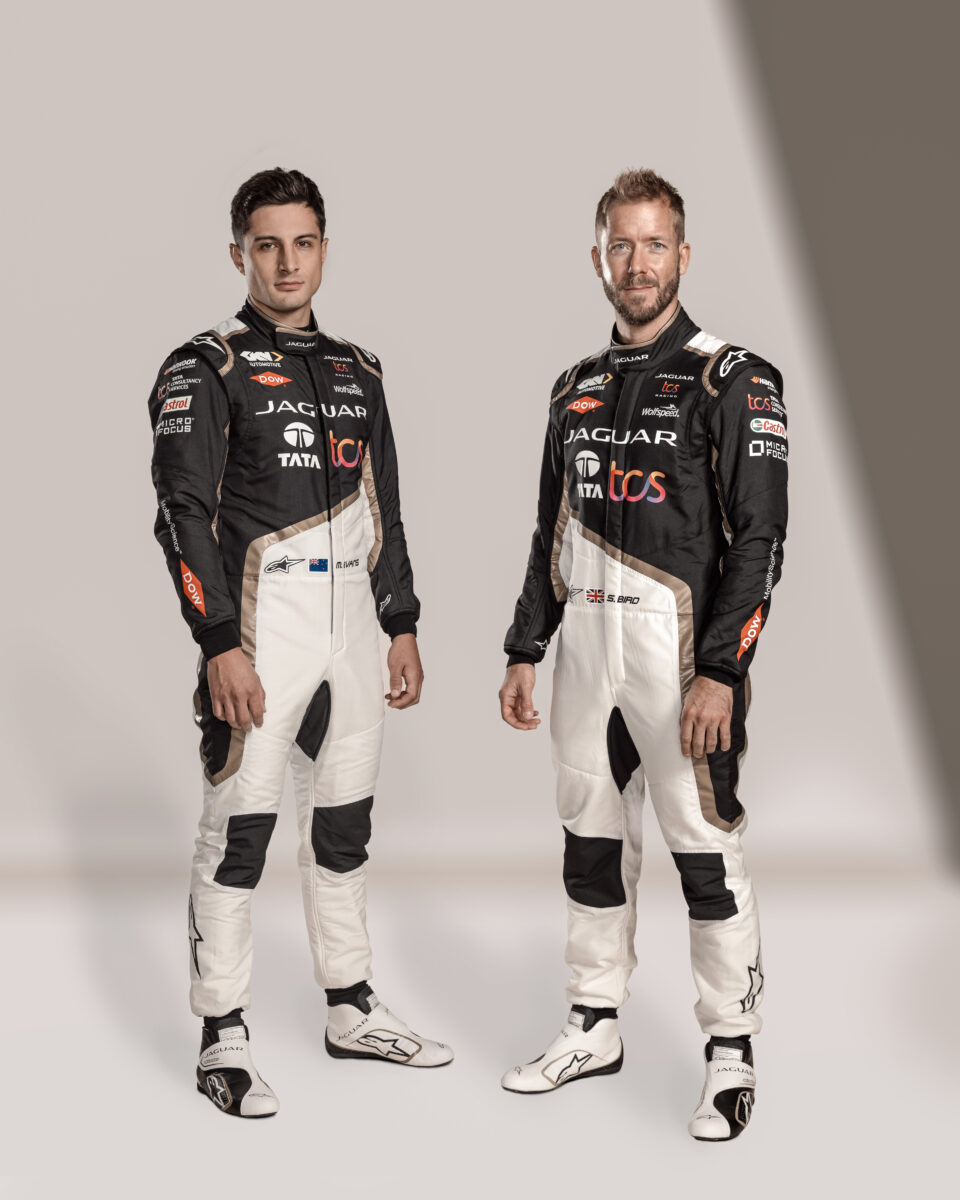
How does this technology trickle down to the consumer?
“In many ways, they [Gen3 cars] are literally laboratories on wheels – a cutting edge prototype operating close to 100% efficiency,” affirms Barclay.
Every single Formula E race pushes the capabilities of consumer-available electric cars even further. This has already been proven by Jaguar with the launch of the I-PACE, their first fully electric car and the first from a luxury European automaker. Just three years after joining Formula E and for a total of four years from conception to reality, the I-PACE is a real-world testament to just how much can be accomplished in electric vehicle development when pushing the envelope week in and week out.
“Not so much on the hardware side, but particularly on the software side, one of the improvements we directly brought to the I-PACE from Formula E was an extra 20 kilometres of range,” said Barclay.
“By pushing our Formula E cars to the absolute limit, we were able to tap into energy potential we never thought was possible.”
It may not sound like much, but added up over the lifespan of the battery, that’s thousands of kilometres of extra juice.
Earlier this month when I was back in the cockpit of the I-PACE, a few laps of Luddenham Raceway confirmed it is just as relevant in 2023 as it was when it launched in 2018.
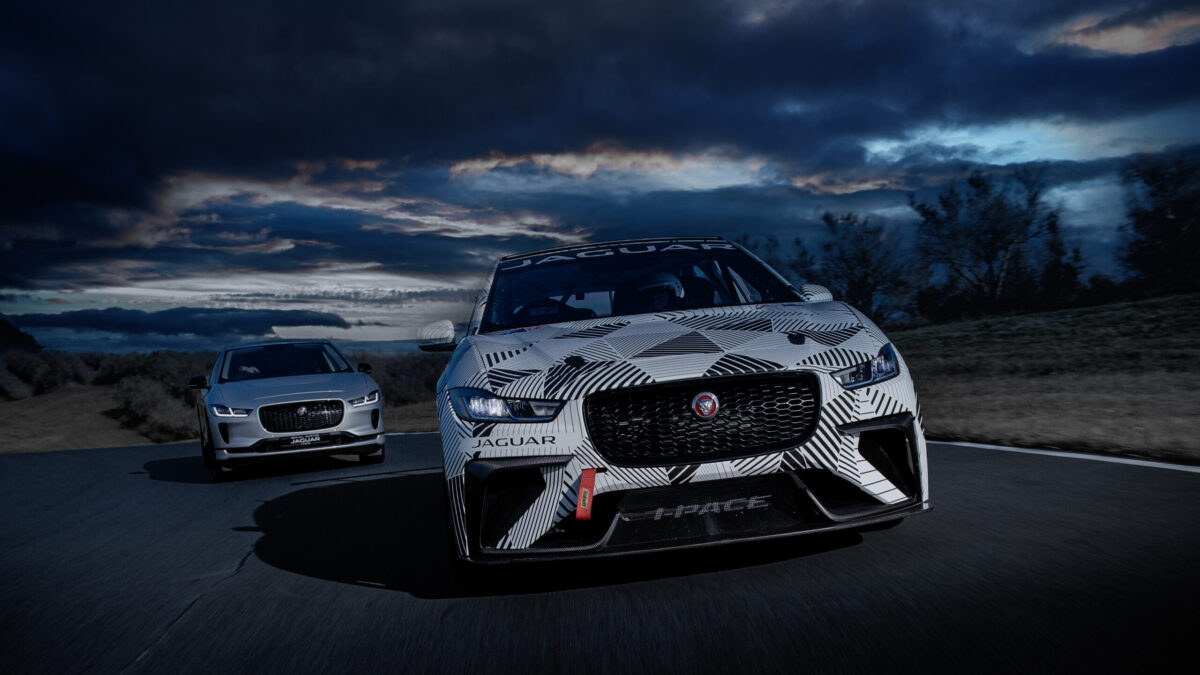
Automakers investing in Formula E get to share the immediate benefits of these learnings with their customers. Through the current season, the 600kW attack charge is showing us what’s possible when nearly double the power commercially available in public charging stations is delivered to the race cars in just 30 seconds. The quicker this charging power is perfected in Formula E, the sooner you’ll see it on the side of your local motorway.
With the dramatic rise of Formula E and shift in public policy away from internal combustion vehicles, the majority of European automakers have firmly set their sights on an all-electric model range by 2030. And then there are others, like Jaguar, who have set more radical deadlines like 2025. Incredibly, that’s only two years away, for everyone playing at home.
“Like when we joined Formula E as the only major European automaker at the time, we’re not going to wait to adopt electrification by 2030,” said Barclay.
“We’re going to accelerate into our future by 2025, and being at the pinnacle of electric racing has allowed us to do that.”

What does the Formula E race calendar look like?
Formula E is snowballing in popularity year after year. For 2023, we’re talking four new destinations on the roster with Jakarta doubling down on back-to-back races for the first time. Interestingly, Berlin is the only city to host a Formula E race since the beginning of the sport.
Barclay also confirmed to us that Tokyo is already locked in for next year.
Formula E 2023 Race Calendar
Round 1: Mexico City, January 14
Rounds 2/3: Diriyah, January 27/28
Round 4: Hyderabad, February 11
Round 5: Cape Town, February 25
Round 6: São Paulo, March 25
Rounds 7/8: Berlin, April 22/23
Round 9: Monaco, May 6
Rounds 10/11: Jakarta, June 3/4
Round 12: Portland, June 24
Rounds 13/14: Rome, July 15/16
Rounds 15/16: London, July 29/30
When can we expect an E-Prix down under?
Now, this was a topic of conversation that really got Barclay going.
“We would absolutely love to come to Australia. From our perspective, it’s a key market. I have no doubt that Australia has one of the most beautiful environments in the world we live in, and protecting that environment is so high on our agenda.”
“Sydney, Melbourne and Adelaide all have such rich histories and passions for motor racing, and would be incredible hosts, so I think all the ingredients are there. Though we really need the governments to want Formula E to come to their cities and get behind electrification.”
“I think it’s only a matter of time before we bring our message to your country. It’s not if, but when.”
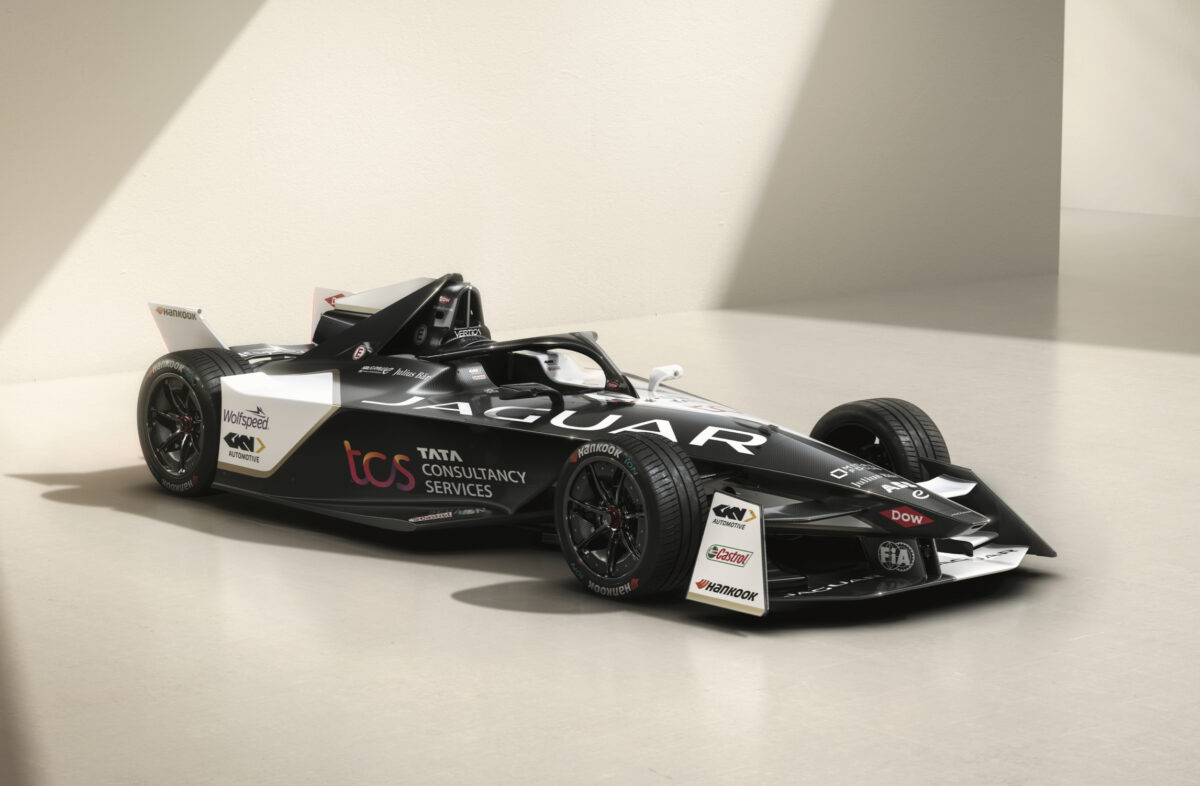
You can watch all 16 races of this Formula E World Championship on Stan Sport.
Learn more about the all-electric Jaguar I-PACE, and then get behind Jaguar TCS Racing ahead of next month’s showdown in São Paulo.
This article is sponsored by Jaguar. Thank you for supporting the brands that support Boss Hunting.
